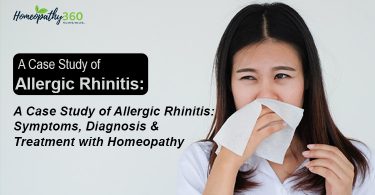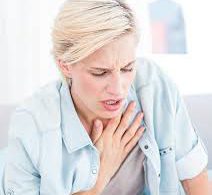Authors:
Dr Subhash Chaudhary. (Lecturer), MD (Hom.) PhD Scholar (WBUHS)
Dr Mallesh Reddy. (PGT), BHMS
Prof. (Dr.) D Basu. (HOD), MBBS, PhD (Med)
DEPARTMENT OF PRACTICE OF MEDICINE, NATIONAL INSTITUTE OF HOMOEOPATHY, KOLKATA
Abstract: Photophobia is an Eye symptom which can cause intense difficulty for the patient. The reason for photophobia includes ocular, neurological and psychiatric pathologies. Photophobia can be associated with pain and day blindness. In selecting the best medicine the physician can take the help of Complete Repertory to the Homoeopathic Materia Medica “Diseases of the Eyes” by E.W. Berridge, as it contains a wide variety of rubrics and sub rubrics related to Photophobia.
Keywords: photophobia, photo-oculodynia, hemeralopia, day blindness
Introduction: Photophobia is described as “a common yet debilitating symptom seen in many ophthalmic and neurologic disorders”. [1] In clinical practice it is an important eye related complaint. Its significance in an individual patient needs to be ascertained by the physician, as it can be part of a much larger pathological process. Relief of the distress of the patient due to the photophobia is a priority for the physician. The detailed information available on photophobia in Complete Repertory to the Homoeopathic Materia Medica “Diseases of the Eyes” by E.W. Berridge can be very much helpful. [2]
Terminology: The term Photophobia derived from the photo (light) and phobia (fear) – but it is literally not fear of light. It has been defined in the dictionary as “abnormal sensitivity to light, especially of the eyes”. [3] It is actually “a sensory state in which light causes discomfort in the eye or head; it may also cause an avoidance reaction without overt pain”. [1] There may be a component of pain induced by the light – in which case it is referred to as ‘photo-oculodynia’. [1] A variant in the clinical presentation is ‘day blindness’ (hemeralopia) where the blurring of vision is induced by light. These patients see better in dimly light situations.
Causes: Photophobia can be due to or be associated with at least four sets of conditions.
- First, Ocular diseases – dry eyes, blepharitis, uveitis, retinal diseases, optic neuritis.
- Second, Neurological diseases – migraine, blepharospasm, meningitis, subarachnoid haemorrhage, head injury, progressive supranuclear palsy, pituitary tumours.
- Third, Psychiatric diseases – agoraphobia, anxiety disorders, depression, chronic fatigue syndrome (neurasthenia).
- Fourth, Miscellaneous conditions– measles, rabies, hang-over, albinism.
For many of the conditions in this long list, homoeopathy has much to offer.
Homoeopathic Prescription: This will be based on Homoeopathic Principles of Totality. Much help can be found by properly using the information in Homoeopathic Repertories in connection with photophobia. To the patient, whatever may be the pathological basis, the problem is considered as an eye complaint. Hence Homoeopathic Repertories will naturally deal with photophobia under ‘Eye’.
This is how it is given in several commonly used Homoeopathic Repertories like Boeninghausen’s Therapeutic Pocket Book, Repertory of Homoeopathic Materia Medica by J.T. Kent, Boger Boeninghausen’s Characteristics Materia Medica and Repertory by CM Boger. The largest collection covering diverse dimensions and applicable to the wide variety of underlying pathological entities is to be found in Complete Repertory to the Homoeopathic Materia Medica “Diseases of the Eyes” by E.W. Berridge. [2] This is a Regional Repertory published in 1873. So, irrespective of whether such photophobia is ocular or neurological or psychiatric or otherwise, the appropriate medicine(s) can be known from the exhaustive list of rubrics and sub rubrics in this Repertory. [2]
In this Repertory the symptom PHOTOPHOBIA is mentioned under different sections and subsections. In Section I A. Functional symptoms, Photophobia (Aversion to Light) is mentioned with cross-reference, See CONDITIONS – LIGHT (pg 13). [2]
The ‘General Character, Sequence, and Direction’ are covered in Section I C.
GENERAL CHARACTER, SEQUENCE, AND DIRECTION.
PERIODICAL – PHOTOPHOBIA. (pg 59)
PERIODICAL – At 7 am – PHOTOPHOBIA. (pg 60)
PERIODICAL – At 4 pm – PHOTOPHOBIA. (pg 61)
GRADUALLY INCREASE and DECREASE – PHOTOPHOBIA. (pg 62)
ALTERNATING IN CHARACTER OR PLACE IN EYES – PHOTOPHOBIA with EYEBALL Colour Red (pg 65)
ALTERNATING IN CHARACTER OR PLACE IN EYES – PHOTOPHOBIA with EYEBALL Lachrymation (pg 65)
ALTERNATING IN CHARACTER OR PLACE IN EYES – EYEBALL Colour Red with PHOTOPHOBIA (pg 65)
ALTERNATING IN CHARACTER OR PLACE IN EYES – Lachrymation with PHOTOPHOBIA (pg 65)
Conditions for Aggravations and Ameliorations are given in Section II.
The rubrics and sub rubrics are listed below, along with the page number. [2]
CONDITIONS – A. AGGRAVATIONS – TIME
DAY. (Sunrise to Sunset) – PHOTOPHOBIA (pg100)
FORENOON. (Morning, Sunrise to Noon) – PHOTOPHOBIA (pg103)
AFTERNOON. (Evening,Noon to Sunset) – PHOTOPHOBIA (pg110)
NIGHT. (Sunset to Sunrise) – PHOTOPHOBIA (pg116)
BEFORE MIDNIGHT. (Sunset to Midnight) – PHOTOPHOBIA (pg120)
CONDITIONS – A. AGGRAVATIONS – SITUATIONS
COLD. – PHOTOPHOBIA (pg123)
HEAT. – PHOTOPHOBIA (pg124)
ROOM In. – PHOTOPHOBIA (pg128)
WASHING. – PHOTOPHOBIA (pg130)
WEATHER HOT. – PHOTOPHOBIA (pg131)
CONDITIONS – A. AGGRAVATIONS – HEAD
With HEAD Symptoms. – – PHOTOPHOBIA (pg155)
CONDITIONS – A. AGGRAVATIONS – EYES
LIGHT, Artificial (pg 169)
LIGHT, Natural (pg 173)
EYEBALL. – Undefined. (Photophobia) (pg175)
READING. – PHOTOPHOBIA (pg178)
READING. – RIGHT– Photophobia (pg180)
WRITING. – PHOTOPHOBIA (pg182)
LOOKING at ARTIFICIAL LIGHT (pg 196)
MOVING EYES. – PHOTOPHOBIA (pg199)
CONDITIONS – A. AGGRAVATIONS – EARS
With EAR Symptoms. – PHOTOPHOBIA (pg207)
CONDITIONS – A. AGGRAVATIONS – NOSE
With NOSE Symptoms. – PHOTOPHOBIA (pg211)
CONDITIONS – A. AGGRAVATIONS – FACE
With FACE Symptoms. – PHOTOPHOBIA (pg217)
CONDITIONS – A. AGGRAVATIONS – TEETH
With TEETH Symptoms. – PHOTOPHOBIA (pg223)
CONDITIONS – A. AGGRAVATIONS – THROAT
With THROAT Symptoms. – PHOTOPHOBIA (pg226)
CONDITIONS – A. AGGRAVATIONS – ABDOMEN
EATING. – PHOTOPHOBIA (pg230)
During ABDOMINAL Symptoms – PHOTOPHOBIA (pg234)
CONDITIONS – A. AGGRAVATIONS – CHEST
With CHEST Symptoms. – PHOTOPHOBIA (pg247)
CONDITIONS – A. AGGRAVATIONS – BACK
With BACK Symptoms. – PHOTOPHOBIA (pg247)
CONDITIONS – A. AGGRAVATIONS – ARM
With ARM Symptoms. – PHOTOPHOBIA (pg254)
CONDITIONS – A. AGGRAVATIONS – LEG
With LEG Symptoms. – PHOTOPHOBIA (pg256)
CONDITIONS – A. AGGRAVATIONS – SLEEP
With SLEEP Symptoms. – PHOTOPHOBIA (pg263)
CONDITIONS – A. AGGRAVATIONS – FEVER
With CHILLS. – PHOTOPHOBIA (pg266)
With HEAT. – PHOTOPHOBIA (pg270)
With SWEAT. PHOTOPHOBIA (pg273)
CONDITIONS – A. AGGRAVATIONS – GENERALITIES
With CONVULSIONS. – PHOTOPHOBIA (pg275)
With WEAKNESS. – PHOTOPHOBIA (pg280)
With GLANDULAR Symptoms. – PHOTOPHOBIA (pg283)
With SKIN Symptoms. – PHOTOPHOBIA (pg284)
SCROFULA– PHOTOPHOBIA (pg286)
MERCURY– PHOTOPHOBIA (pg288)
CONDITIONS – B. AMELIORATIONS.
EYES. – CLOSING EYELIDS. – PHOTOPHOBIA (pg307)
Conclusion: The timing of photophobia, the modality of photophobia and the presence of associated conditions differ from individual to individual. As a keen observer, the physician has to be aware of all the dimensions so as to reach the best prescription for the patient who has the problem of photophobia. The speciality of this Repertory is the variety of concomitants that are listed. Use of this Repertory is going to be extremely beneficial in the management of eye problems by homoeopathy. This article has highlighted one complaint, namely Photophobia, to show the extent to which the rubrics and sub rubrics given in this Repertory of Berridge can be utilised.
References:
- Digre K.B., Brennam K.C.- Shedding Light on Photophobia. J Neuroophthalmol. 2012, 32 (1): 68-81.
- Berridge E.W. Complete Repertory to the Homoeopathic Materia Medica “Diseases of the Eyes” 2nd New Delhi: B Jain, 1873.
- Webster’s New World Dictionary. Cleveland: The World Publishing Company; 1968.





